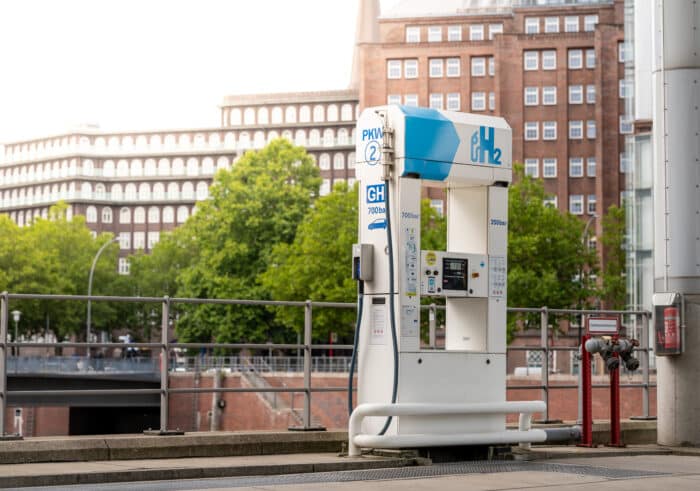The Commonwealth Scientific and Industrial Research Organisation in Australia (CSIRO) identified key megatrends shaping our lives for decades to come.
A megatrend is seen as a long-term trend that affects societies, governments, and economies permanently, and these trends happen when multiple smaller trends merge to create a megatrend.
The following 5 megatrends were established:
- Digital transformation
- Investing in supply chain resilience
- Localization and staying closer to home
- A changing economic landscape
- Stepping into the new normal
One of the organization’s latest journals, Our Future World: Global megatrends impacting the way we live over coming decades earmarks climate change as a critical aspect that will influence employment.
As a result, environmental, social, and corporate governance is on the agenda when it comes to the new workforce.
How do these megatrends apply to engineers?
According to the organization, there will be a need to consider the role of trained individuals in key areas that will allow the world to accommodate growing populations, but not at the cost of the environment.
The following engineering areas are set to boom and bring significant employment opportunities:

Artificial Intelligence
Industries and policy spheres around the world are increasingly adopting AI technology and developing AI capabilities.
Research into AI is increasing rapidly, with the number of peer-reviewed AI publications increasing nearly 12 times from 2000 to 2019. AI represented 3.8% of all publications in 2019 versus 0.8% in 2000.
The AI share of patents has also grown from 2% in 2000 to 2.9% in 2019.
According to the journal, while there is limited data on R&D expenditure on AI, the size of the global AI market more generally is increasing. The market is estimated to grow from $455 billion in 2021 to $665 billion by 2024. The global growth in AI research and investment is likely to continue and transform how all industries operate in the coming decades.
Engineering Automation is one of the key areas to accelerate the industry further, and engineers are not only part of building AI solutions, but they also form part of the researchers and patent-builders for AI.
Civil engineering
The ongoing pull for people to live in cities continue and in 2018, 55.3% of the global population lived in urban areas and this is forecast to grow to 60.4% by 2030 and 68.4% by 2050, with the majority of the global urban population concentrated in Africa and Asia.
The number of megacities with 10 million or more inhabitants will also increase from 33 in 2018 to 43 by 2030.
For this to take place, civil engineering is vital. Not only to improve and expand infrastructure, but do it shrewdly, and aligned with new building practices that are extremely attuned to sustainability and counteracting climate change.

Industry 4.0
The adoption of high-performance computing, AI, machine learning, sensors and the Internet of Things (IoT), robotics, and other Industry 4.0 technologies is growing globally. The next wave of digital innovation is expected to generate trillions of USD dollars globally.
The Australian Government has invested $6 million to establish six Industry 4.0 test labs to support the adoption of Industry 4.0 technologies.
There are untapped opportunities for Australia to accelerate digital adoption and its associated productivity gains and engineers will be at the helm of bridging this gap.
Emerging defense technologies
Defense strategy and planning are being impacted by scientific and technological advances in high-speed, variable-trajectory, and precise-targeting missiles artificial intelligence (AI) and advanced autonomous systems, and cyber/information warfare.
The number of countries with strong or leading capabilities in these areas of technology may increase or diversify in the future. These technologies are already being used in current warfare and grey-zone conflict.
It is possible these technologies may decrease the usefulness of certain defense equipment and strategies and heighten the effectiveness of others.

Hydrogen is growing
The global hydrogen industry is growing rapidly given the potential role it could play in decarbonization.
Over 30 countries have developed hydrogen roadmaps or have zero-carbon emissions targets that involve hydrogen strategies.
Australia is well placed to become a leading producer and exporter of green hydrogen, enabled by its abundant access to renewable energy resources and skilled workforce.
Demand for clean energy is growing rapidly across Asian nations, particularly in Japan and Singapore which cannot generate sufficient clean energy to meet demand.
Significant infrastructure investment and efficiency gains, however, will be required to realize Australia’s hydrogen potential, given that green hydrogen is currently three times more expensive than blue (natural-gas-powered) hydrogen.
Climate change impacts critical infrastructure
In the past infrastructure like pavements and railways were built using materials and methods in stable climatic conditions.
This has changed. High temperatures can increase the risk that road pavements will rut or railways will expand and buckle.
One analysis of transport networks across the European Union and the United Kingdom estimated that operational and maintenance costs could increase by 1.3% or $1.4 billion if global warming increases.
Just these seven points on identified megatrends provide a dialogue that engineers are vital in terms of employment, as upskilled and reskilled engineers, as well as new engineers, could
well work in an industry that demands one or a combination of work relating back to AI, civil engineering or Hydrogen power.
These megatrends have scientific thinking at their core and the future is one that relies on astute technology and a built environment that is incredibly strong and modern.

Electric vehicle boom
The cost of electric vehicles is declining faster than expected, enabled by steep reductions in the cost of lithium-ion batteries.
Electric and internal combustion engine vehicles are expected to reach price parity by 2025.
Various car manufacturers have committed to discontinuing the production of internal combustion engine cars within the next two decades, including Volvo, Ford, Honda and General Motors.
Norway is leading the charge, with electric vehicles making up 56% of its market share.
Electric vehicle uptake has been slower in Australia, where only 1.1% of the market share is electric. To accelerate the transition to e-mobility, Australia’s Future Fuels Strategy for instance is focused on developing the grid infrastructure and charging stations needed to support more electric vehicles on Australian roads.
This means that engineers are not only building the vehicles of the road but need to build roads that are inclusive of the needs of electric vehicles going forward.
So how will these megatrends shape the future workforce?
The Australian Treasury recently released new plans during the 2022 Job and Skills summit.
Here the government acknowledged that for the next 30 years the transition to a net-zero economy will impact the Australian economy.
The make the transition as smooth as possible the government acknowledged that the adoption of new and emerging technologies is pertinent and that it will lead to an increase in demand for new skills and business models.
Some projections include:
· Growth in demand for critical minerals will increase and Australian lithium exports are estimated to more than double. This is to meet the demands of lithium batteries that are needed in many green or alternative energy movements.
- The transition to green products and sources allows Australians working in agriculture, manufacturing and resource sectors to change their jobs, and take part to strengthen new adoption practices in the country. There is also a demand for more digital literacy, and as a result, workers with this literacy will be able to take part more effectively to meet net-zero goals.
- The technology industry has grown considerably and it’s estimated that 1 in 16 Australians are working in the sector. It means there is a skilled workforce already active in the area as technologies expand even further.
- STEM occupations are expected to experience employment growth of 14.2 percent over the five years to November 2026, around twice as fast as non-STEM occupations.
Making the most of the opportunities created by transformations is the key to creating the next generation of high-value-adding jobs.
If you are able to tick just one of these boxes in your acquired skills – you could potentially face job security but also be part of the generation that combats climate change.
References:
VicHealth & CSIRO (2015) Bright Futures: Megatrends impacting the mental well-being of young Victorians over the coming 20 years. Victorian Health Promotion Foundation, Melbourne.
Naughtin C*, Hajkowicz S*# , Schleiger E, Bratanova A, Cameron A, Zamin T, Dutta A (2022) Our Future World: Global megatrends impacting the way we live over coming decades. Brisbane, Australia: CSIRO.
Australian Government, Treasury. (2022). Jobs and Skills Summit Issues Paper.


